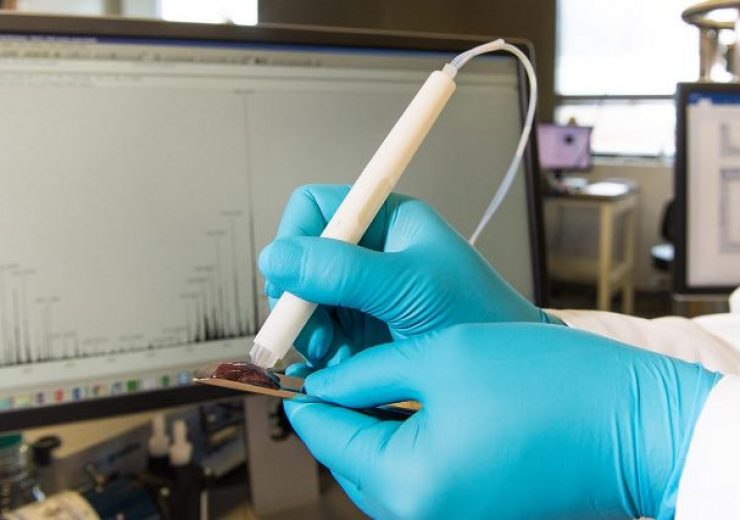The device is designed to precisely detect tissues and surgical margins directly in patients

Jialing Zhang demonstrates using the MasSpec Pen on a human tissue sample. (Credit: Vivian Abagiu/Univ. of Texas at Austin)
Researchers from the University of Texas at Austin (UT Austin) have tested a diagnostic device, dubbed MasSpec Pen, for the first time in pancreatic cancer surgery.
The device is said to have demonstrated its ability to precisely detect tissues and surgical margins directly in patients, as well as differentiate healthy and cancerous tissue from banked pancreas samples.
With around 15 seconds per analysis, the method is over 100 times faster than the current gold standard diagnostic called Frozen Section Analysis.
According to researchers, the ability to detect margins between healthy and cancerous tissue in pancreatic cancer surgeries will enhance the survival chances of patients.
Invented by a team of scientists and engineers at UT Austin, MasSpec Pen is an handheld instrument that enables surgeons to gain precise diagnostic information about what tissue to cut or preserve.
UT Austin chemistry assistant professor Schiavinato Eberlin said: “These results show the technology works in the clinic for surgical guidance.
“Surgeons can easily integrate the MasSpec Pen into their workflow, and the initial data really supports the diagnostic accuracy we were expecting to achieve.”
In order to design and assess the technology in the laboratory for pancreatic cancer, the researchers first used the MasSpec Pen to analyse 157 banked human pancreatic tissues.
Later, the system was taken to the operating room at Baylor St. Luke’s Medical Centre in Houston. The technology was tested in 18 pancreatic surgeries at the centre.
To date, the pen was assessed in over 150 human surgeries, including for breast and thyroid.
In addition, the researchers intend to submit the design to the US Food and Drug Administration for approval as a medical device.
Banked tissue samples have been supplied by the Cooperative Human Tissue Network and Baylor.
